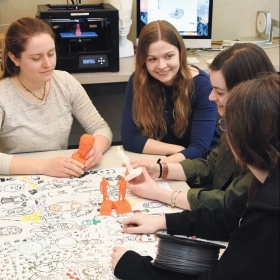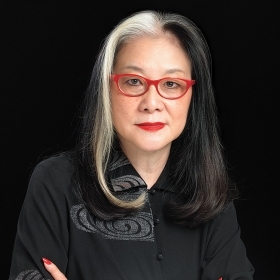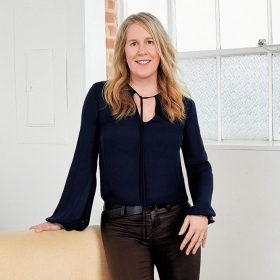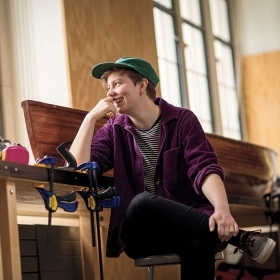The students in Michelangelo: Artist and Myth, taught by Professor of Art Jacki Musacchio ’89, learned how works of art were reproduced in the Renaissance—and in today’s world, using computer scans of original Michelangelos.

Photo by Richard Howard
As a scale model of a bust by Michelangelo emerges on a 3-D printer at Clapp Library, four first-years plunge into a discussion about reproducing art: What creates the “aura” of a work of art like the David? If you see a model of it, how is the experience different? Would the Sistine Chapel be the same if seen by virtual-reality goggles as in person?
Welcome to Michelangelo: Artist and Myth, a first-year seminar taught by Professor of Art Jacki Musacchio ’89. One of 16 classes across the curriculum created specifically for first-years, these seminars are intended to take students deep into a topic, build ties with faculty and classmates, and introduce them to resources at the College. Musacchio, a specialist in the Italian Renaissance, is using Michelangelo—sculptor, painter, civil engineer, architect, poet, diplomat—as an interdisciplinary lens on the period. Beyond class time with discussion of readings, students have hands-on experiences ranging from marble carving in Pendleton, papermaking and printing in the book-arts lab, and touring galleries at the Museum of Fine Arts and the Gardner with curators. On this day, the group is learning how works of art were reproduced in the Renaissance—and in today’s world, using computer scans of original Michelangelos.
“They can touch things, and they can see things, and they can do things as closely as possible to the way it was done in the Renaissance,” Musacchio says. “First-year students are still figuring out what they’re interested in. You can open whole new worlds to them.”


